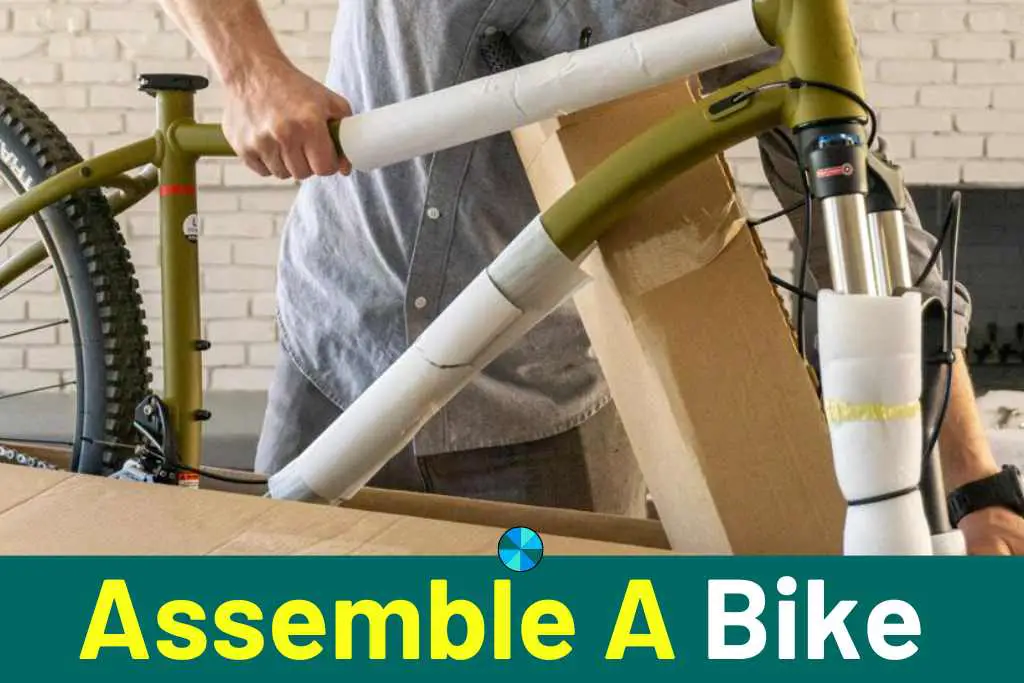Do you know how long it takes to assemble a bike? this is one of the questions my readers ask a lot. Well, I´ve got you covered.
Although you might be used to walking into the store and picking out a brand-new, ready-to-ride bike, you can now get one delivered or purchase the parts and put it all together yourself. You’ll be wondering, then, how long does it take to assemble a bike?
A self-assembly bike usually takes 30 minutes to an hour to put together, depending on how much assembly is required.
Read ahead to find out all you need to know about what it actually takes to get the job done!
How Long Do You Need To Assemble A Bike Yourself?
When we’re talking about putting a bike together by yourself, we do need to specify what that job actually means. There are a lot of different kinds of assembly that you might need to do, and some will obviously take a lot longer than others.
A lot of flat-pack, self-assembly bikes are delivered in large, relatively convenient boxes. For these, all you typically need to do is attach the pedals, handlebars, seat, and front wheel, which is a reasonably quick job that usually takes around 30 minutes to complete.
All the way down at the other end of the spectrum, you could pick up all of the parts separately and actually put everything together by yourself. This process can take quite a long time. Professionals will usually get the job done in around 45 minutes to an hour, but you are likely to find that it takes closer to two hours for an amateur.
What Kind Of Assembly Am I Going To Have To Do For My Bike?
It’s definitely worth checking how much of your bike will actually be in one piece before you get your hands on it.
Most large companies nowadays ship self-assembly bikes in a large box with just a few parts not fully attached in order to save space. This is typically the seat, the handlebars, the front wheel, and the pedals.
With that being said, some “self-assembly” bikes take a lot more work. You can find yourself putting together almost everything by yourself, and that is a much larger job.
Are Self-Assembly Bikes Worth It?
You can save a good amount of money with a flat-pack or self-assembly bike, and they are pretty convenient too. These bikes are becoming increasingly popular, but they may not be quite as cost-effective as they seem.
Assembling a bike is not necessarily the most complicated job in the world, but it is really important that it is done properly. In fact, some EU countries have actually banned the sale of self-assembly bicycles due to security concerns.
Small mistakes during the assembly process can be a significant safety issue, and you may find yourself forking out for additional repairs or fixes along the way.
If you don’t have the tools, skills, or know-how required then it might be worth spending a little extra to have a professional look things over and do a final tune-up before you take your bike out on the road.
How To Assemble A Flat-Pack Bike
Since the most common form of flat-pack, self-assembly bikes come in a pretty similar state, the steps that you need to follow are also usually quite similar.
It is really important that you read all of the instructions that come with your bike, and every part of the manual, so that you know exactly what is required for your specific model.
The general steps that you will usually have to follow in order to assemble your bike are:
- Locate your tools. Some tools will probably come with your bike, but you will also usually need an adjustable wrench, a cable cutter, a Philips head and flathead screwdriver, and a set of allen keys.
- Take the parts out of the box carefully, removing the packaging. Make sure to identify your small parts box as well.
- Remove the plastic protectors from the wheel. Try not to touch the disc brake rotor.
- Install the handlebar. Untangle the cables and orient the stem and fork so that they are facing forwards. Then, loosen the stem face plate, insert the handlebar into the stem, and tighten the stem face plate up again.
- Install the seat. Place the seat post into the central position, making sure that it is adjusted to your height – within the minimum and maximum height lines on the post itself. Tighten the securing fastener with an allen key.
- Flip the bike onto its seat and handlebars to attach the front wheel. You may have a thru-axle to insert or a quick-release that your axle slots into. Make sure that the disk brake is on the same side as the braking mechanism.
- Once the wheel is in place, close the braking system. Usually, this means pulling the brake cable from one side to lock into the clip on the other side. Test the brakes to make sure they are working.
- Install the pedals. Make sure that you have the left pedal on the left side, and the right pedal on the right side. Screw the pedals into place. They should be threaded on the spindle, then you can use a wrench to fully tighten them into place.
- Finally, check over all of the components to ensure they are securely tightened and properly adjusted.
All of these steps will be slightly different, depending on the model of bike that you have chosen. Follow all instructions carefully and have your bike checked by a professional if you are at all unsure.
How to assemble your new bicycle >> Check out the video below:
Summary
So, how long does it take to assemble a bike? It really does depend on how much assembly is actually required.
Many flat-pack bikes are sold almost fully ready to ride, and they only need you to attach the handlebars, pedals, seat, and one wheel. This job usually takes around 30 minutes to complete.
If you are putting an entire bicycle together from its component parts, however, you might be looking at a job that can take up to two hours, particularly if you are less experienced with the process.
References
https://www.bikeradar.com/advice/workshop/how-to-assemble-a-bike/

